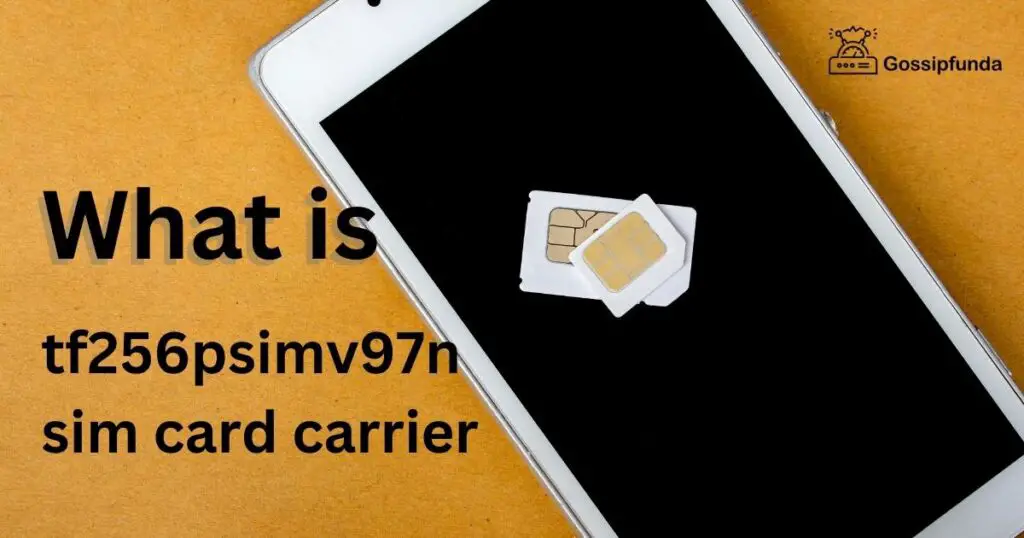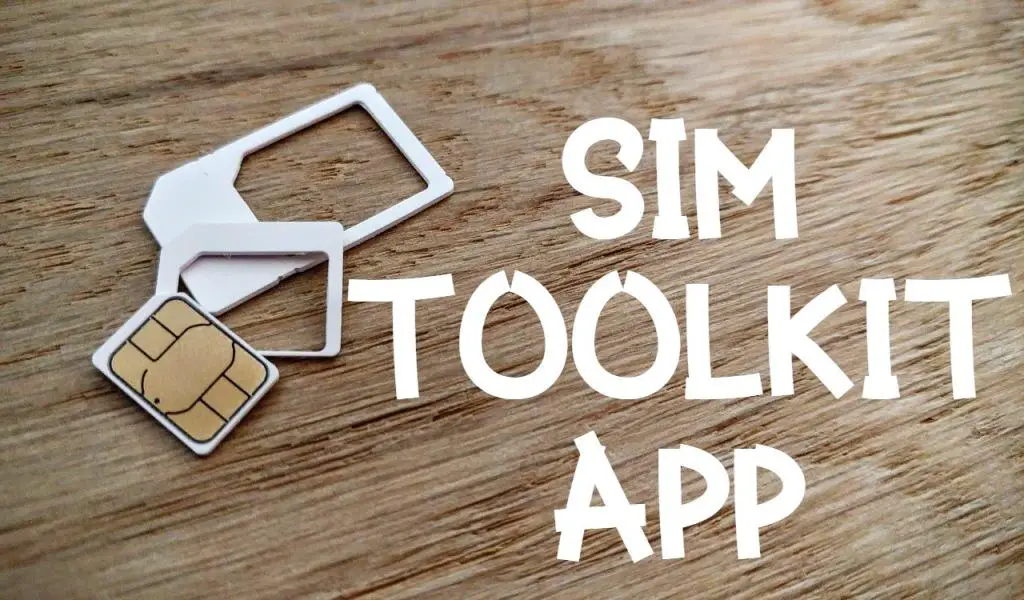Cellular device mobile network connectivity is made possible via the TF256PSIMV97N SIM card carrier. It is a special kind of SIM card holder made for gadgets that use nano-sized SIM cards. The gadget can accommodate two SIM cards, making it the perfect choice for people who travel frequently or who require numerous SIMs on one smartphone. Moreover, it provides consumers with a number of helpful functions. It is compatible with a variety of devices and supports numerous operating systems. It comes with an integrated eSIM, therefore using a physical SIM card is no longer necessary to access mobile network services.
The TF256PSIMV97N SIM card carrier offers a sturdy construction that protects SIM cards from theft or damage. Its long-lasting usage is guaranteed by the use of premium materials that are durable against wear and strain. Sim card change is quick and simple because to the device’s tiny size, which allows users to carry it in a pocket or purse.

What is a Sim Card carrier?
A SIM card carrier also called a holder or adapter, permits users to switch between multiple SIMs on one device. It securely holds one or more SIM cards and allows easy insertion or removal as required.
Various types of SIM card carriers exist, including single and multi-SIM carriers capable of holding several SIMs simultaneously. Certain carriers are device-specific, while others are adaptable to numerous devices. A significant advantage of a SIM card carrier is the capability to switch between several SIMs on one device. This can be particularly useful for users who frequently travel or who need to use different SIM cards for different purposes. For example, a user may have one SIM card for personal use and another SIM card for work-related communications. Without continuously taking out and reinserting the cards, a SIM card carrier offers a simple changeover between two SIM cards.
Carriers for SIM cards can shield them from harm or theft. Due to their small size and fragility, SIM cards can often be lost or broken if not handled correctly. It secures and safeguards SIM cards, lowering the possibility of loss or damage. Also, a variety of SIM card carriers are available, each with its own set of features and advantages. While some carriers can only accommodate one SIM card at a time, others can accommodate several. It’s possible for carriers to specialize in a certain SIM type or to work with a variety of SIM sizes.
The eSIM carrier also referred to as an electronic SIM card or eSIM, is a common type of SIM card holder. In order to enable mobile network services without a physical card, an eSIM is a virtual card with mobile network credentials. As more handsets embrace eSIM technology, eSIM carriers are growing in popularity. Dual SIM providers allow you to use two SIM cards on a single phone. It is beneficial for persons who frequently travel or who require various SIM cards for various needs. For instance, a user might have two SIM cards: one for personal usage and the other for communications relating to their place of employment. Sims can be switched between dual-SIM carriers without the user having to physically remove and re-insert their cards.
Hence, a SIM card carrier is a little, transportable gadget that enables customers to move between many SIM cards on the same smartphone. A SIM card carrier is a useful and practical tool for persons who constantly switch between SIM cards, such as frequent travelers. Clients have a number of carriers from which to choose, allowing them to select the one that best suits their needs and interests.
How to fix a SIM card carrier?
A SIM card carrier is an essential component of a mobile phone. It houses the SIM card that enables communication services such as calling, messaging and internet access. SIM card carriers can malfunction like any hardware component, resulting in a loss of communication services. Prior to beginning the repair of a SIM card carrier, it is crucial to comprehend the several fault types that could develop.
Damaged SIM card
Issues with the SIM card carrier may result from a physically damaged SIM card. It might not fit well or make good contact with the pins on the SIM card carrier.
Clogged SIM card slot
The SIM card slot might become clogged with dust or dirt, making inserting or removing the SIM card difficult.
Loose SIM card tray
The SIM card tray may become loose due to wear and tear or accidental drops, allowing the SIM card to slide about or detach from the provider.
Corroded SIM card pins
Because of moisture or other environmental variables, the SIM card carrier’s pins can corrode, making appropriate contact with the SIM card problematic. Now that we understand the types of faults that can occur, let’s look at how to fix them.
Replace the SIM card
If the SIM card sustains physical damage, it must be replaced. Contact your service provider if you need a new SIM card.
Clean the SIM card slot
When a SIM card sustains physical damage, you must replace it. Speak with your service provider to request a new SIM card.
Check the SIM card tray
Try gently pushing the SIM card tray in to tighten it if it is loose. You might have to replace it if it is damaged.
Clean the SIM card pins
You can clean the corroded SIM card pins with a soft cloth or a little brush if necessary. Another option is to clean them with a little rubbing alcohol. In cleaning them, take care not to bend the pins.
Reset the phone
If none of the previous techniques work, consider resetting the phone to factory settings. This will delete all data on the phone, so create a backup of any vital data before resetting. Read the phone’s user manual or contact the manufacturer for instructions on how to reset the phone.
Visit a repair shop
If unable to repair the SIM card carrier, seek assistance from a repair shop. A professional technician will be able to diagnose the problem and fix it for you.
Finally, while a defective SIM card carrier is inconvenient, it is repairable with the right information. If you are unsure about repairing the carrier yourself, it is usually advisable to get professional assistance. Ensure to back up any vital data before attempting to repair the phone, and carefully follow the manufacturer’s recommendations.
How to Identify SIM card carriers?
SIM cards are crucial in the world of mobile phones because they allow devices to connect to cellular networks. The mobile network provider, phone number, and device identity are all stored on a tiny chip called a SIM card. You might not be aware of the carrier to whom the SIM card belongs if you have a used or second-hand phone.
1: Look at the SIM Card
Every SIM card features the company’s name or emblem. It might not possess both. But a logo is always present. Use it to locate your Carrier. If you have the SIM cover you received while purchasing a SIM card, you can find out additional information. even if you might have already thrown away the cover. But chances are you already have it if it’s the new SIM card.
2: Use a Carrier Lookup Tool
A carrier lookup tool is another technique to determine the carrier of a SIM card. There are internet resources that determine the carrier by using the SIM card’s connected phone number. Popular carrier search applications like “Whose Number is This?” and “Number Guru?” may require you to join up for an account or charge you money, and they aren’t always accurate.
3: Check Your Phone’s Settings
If you have a smartphone, check the settings to see who the SIM card’s carrier is. Select Settings, General, then About on an iPhone. Scroll down to Carrier to see which carrier your smartphone is now connected to. On an Android device, navigate to Settings, About Phone, and Status. Discover which carrier you’re affiliated with by looking for the Network or Operator field.
4: Call Customer Support
Contacting the customer support of your phone or mobile network provider is another option if you want to learn more about the SIM card’s carrier. If you provide them with the phone number connected to your SIM card, they ought to be able to identify the carrier. Be prepared to supply more information to prove your identification, such as your name, address, or account number.
5: Try the SIM Card on a Different Phone
Try inserting the SIM card into a separate phone to see which carrier it belongs to. Switch off both devices, take the SIM card out of the first one, and put it in the second. The second phone should be turned on while you wait for a connection to the cellular network. The status bar or lock screen of the phone should display the name of the carrier. Try heading to the phone’s settings to see if you can find the carrier there if the carrier’s name doesn’t show up.
When resolving problems with your cell network or if you are using a refurbished device, knowing the carrier of a SIM card is crucial. There are several ways to figure out a SIM card’s carrier, including by inspecting the SIM card, utilizing a carrier lookup tool, checking the phone’s settings, phoning customer service, or trying the SIM card in a different phone. For people utilizing used equipment or having problems with their mobile network, these techniques may be helpful. You should have no trouble determining the SIM card’s carrier by utilizing the procedures listed above.
How to Check iPhone carrier?
Here are some methods,
Method 1: Check iPhone Carrier using Settings
If your iPhone is turned on and you have access to its settings, this method will work.
- Step 1: Your iPhone will launch the Settings app.
- Step 2: Tap the General option after swiping down.
- Step 3: Tap on About.
- Step 4: The name of the carrier your iPhone is locked to can be found in the Carrier section if you scroll down.
Method 2: Check iPhone Carrier using SIM Card Tray
You may check the carrier your iPhone is locked to if you have a SIM card tray removal tool.
- Step 1: Locate the SIM card tray on your iPhone.
- Step 2: Insert the SIM card tray removal tool into the hole next to the SIM card tray.
- Step 3: Pull out the SIM card tray.
- Step 4: On the SIM card tray, you will see the name of the carrier your iPhone is locked to.
Method 3: Check iPhone Carrier using the IMEI number
The IMEI number can also be used to determine the carrier your iPhone is locked to.
- Step 1: Navigate to a carrier checking service’s website.
- Step 2: In the supplied space, enter the IMEI number of your iPhone.
- Step 3: Choose the Check option.
- Step 4: Watch for the carrier that your iPhone is locked to appear on the page.
Method 4: Check iPhone Carrier using iTunes
- Step 1: Use a USB cable to link your iPhone to your PC.
- Step 2: Open iTunes.
- Step 3: Let iTunes find your iPhone before continuing.
- Step 4: Choose the symbol for your iPhone in iTunes.
- Step 5: Click on the Summary tab.
- Step 6: You can find the name of the carrier your iPhone is locked to by looking for the Carrier section.
To summarize, the four methods stated above can be utilized to verify iPhone carriers. Users’ settings, the SIM card tray, the IMEI number, and iTunes are all straightforward ways to determine the carrier your iPhone is locked to. You must be informed of your iPhone’s carrier in order to unlock it or change carriers.
Conclusion
A SIM card carrier, a small but important gadget, allows you to move between multiple SIM cards on a single device. Carriers for SIM cards offer benefits such as protection against loss or damage and easy swapping between cards without physically removing them. Individuals who travel frequently or need to utilize many SIM cards for varied purposes may find this feature extremely useful. Each form of SIM card carrier, such as nano-SIM, micro-SIM, dual-SIM, and eSIM, has its own set of features and benefits. Dual-SIM and eSIM carriers allow for dual-SIM or virtual SIM use, whilst nano-SIM and micro-SIM carriers are just for certain SIM types.
Despite their limitations, SIM card carriers are critical for many users’ freedom and ease in mobile communication. Switching between SIM cards on the same smartphone is now possible without affecting quality or performance. Furthermore, the advancement of eSIM technology has increased the convenience and accessibility of SIM card carriers. Users can keep virtual SIM cards on smartphones with eSIM carriers, making switching between mobile network services simple. This technology eliminates the need for actual SIM cards, making it ideal for frequent mobile network switching.
To summarize, SIM card carriers are necessary instruments that provide users with freedom and ease in mobile communication. While it may develop faults, seeking assistance from a repair shop can help to restore its functionality. SIM card carriers are evolving as a result of technological breakthroughs and eSIM development, providing greater convenience and accessibility for mobile communication.
Rahul Kumar is a passionate tech journalist and gaming expert with a knack for breaking down complex game mechanics into easy-to-follow guides. With years of experience covering multiplayer shooters and strategy games, he specializes in troubleshooting gaming errors, optimizing performance, and enhancing the overall gaming experience. When he’s not diving into the latest co-op titles, you’ll find him testing new hardware, exploring hidden gaming tricks, or engaging with the gaming community to bring the most effective solutions. Follow Rahul for in-depth gaming insights, practical fixes, and all things action-packed! 🚀🎮

